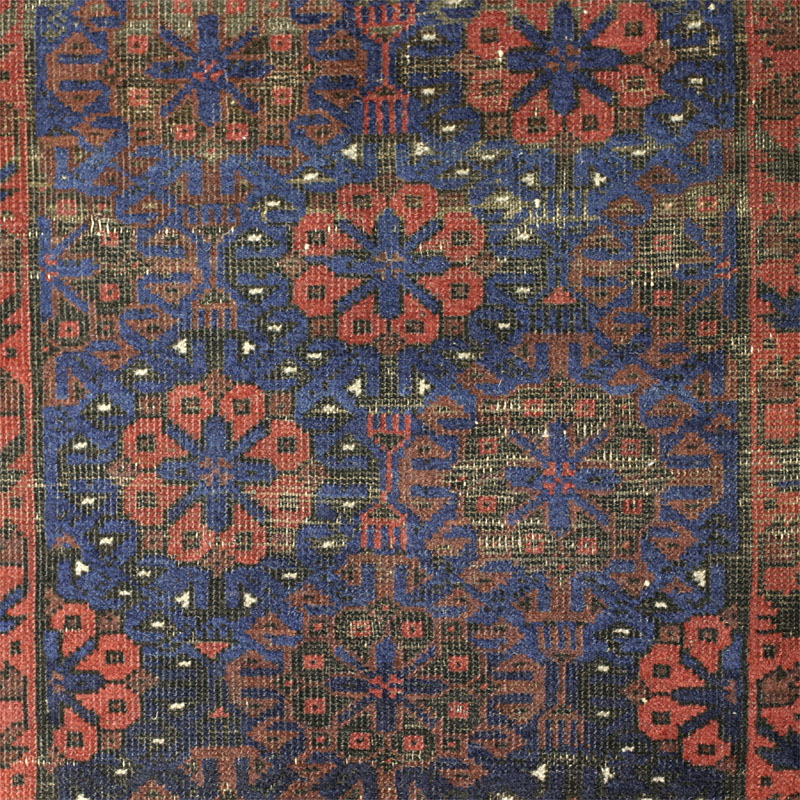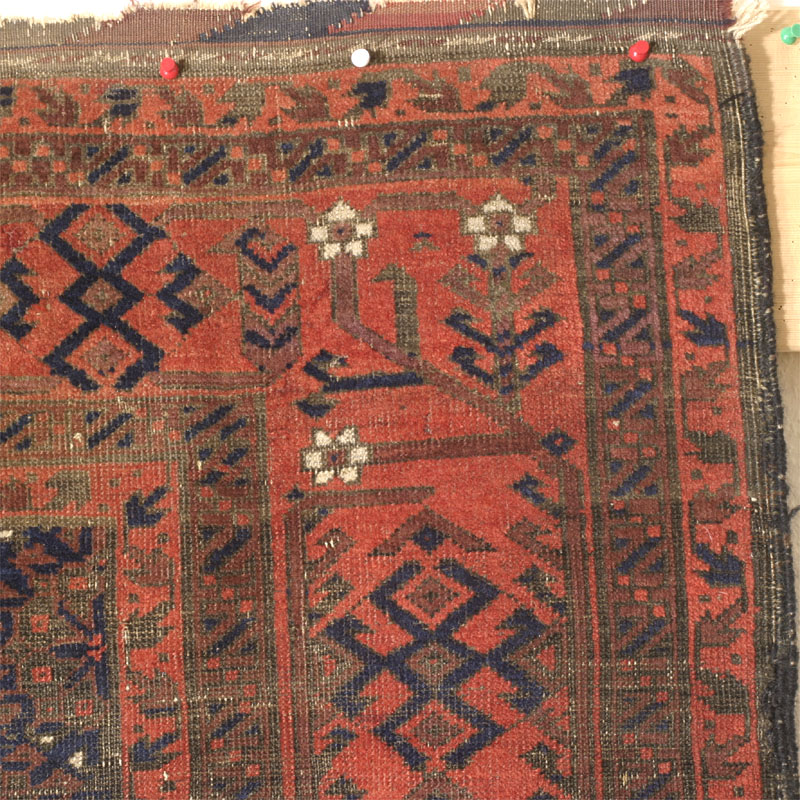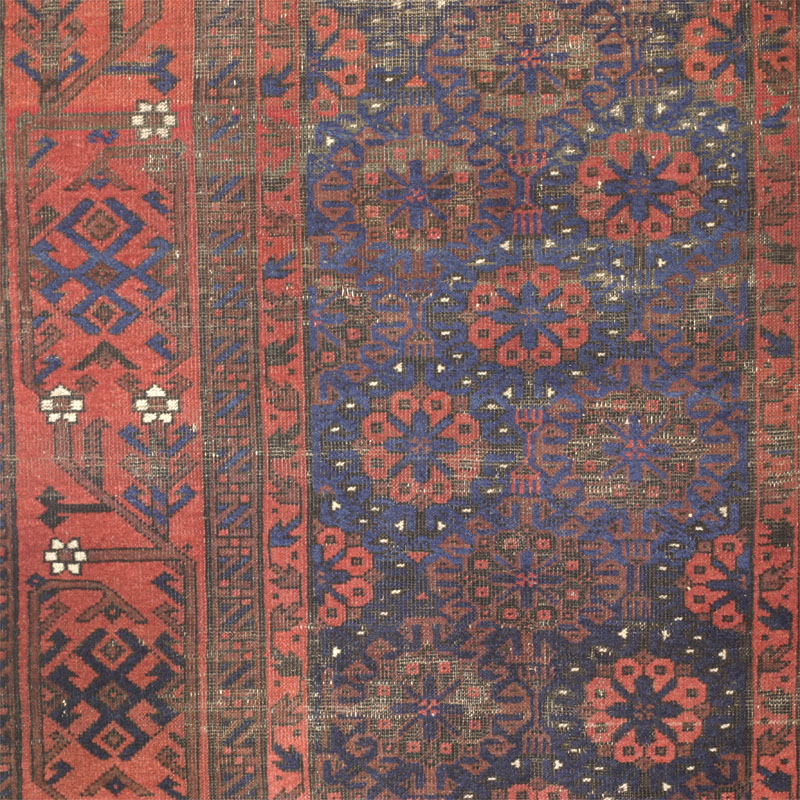A rug of a type sometimes ascribed to the Taimuri (Timuri, Tiemuri) tribe. Ian Bennett places it in the Torbat-i Jam area (I mean this particular rug, not the type). Given the many contradicting statements regarding Baluch attribution, I intend to keep a low profile and venture no specific claim. Just pointers: merely going by the type of border and accepting Jerry Anderson's attributions in T. Cole's interview "From the Horses Mouth", one would think of the 'Jehan Begi' tribe (compare fig. 6 and 7 in the article, which you can google by its title); structurally, however, looking at the technical analyses in the picture legends, it conforms more to the Salar Khani rug, north Sistan, in figure 2, with its non-depressed weave and its 6-cable selvages.
What is clear is that the rug is very pretty; of good age (second half of 19th c.); in decent condition except for the heavily corroded dark brown (a common feature in old Baluch rugs); and showing a very well executed diagonal endless repeat design of blossoms with eight-pointed stars in the centre which radiate outwards into latch hooks that together describe an octagonal shape. Fitting neatly into the negative space where horizontally neighbouring octagons meet, we find a characteristic (unusual?) double fork motive which may provide an additional clue for the attribution—if anyone wants to come forward, I would be happy to extend this description.
The rug has a spacious and pretty meander border which is not at all uncommon in old Baluch-type rugs, with an angular vine bearing three white blossoms alternating with a geometric motive based on a diagonals-only figure composed of a vertical row of three diamonds diamonds and latch hook extensions (according to some derived from flat-weave structural necessities, according to others of deep totemic significance). To both sides of the main border we find simple secondary borders: the first a geometric motive alternating blue diagonal stripes (which I tend to read as a Z-shape) and an opposite diagonal composed of three small squares; the second a simple meander showing a gabled leaf form cycling through blue, light brown and dark brown.
The rug measures 6ft.10in. x 3ft.6in. (208x 107 cm). Non-depressed warps, knotting is asymmetric open to the left. Knots per inch ca. 10.v, 8.h = 80kpsi. Off white wool warps, 2 wool weft shoots mostly in olive brown, some in lighter brown. Selvages have six thin cords, the two outer ones seem thicker. The handle is leathery, quite flexible, more so horizontally (i.e. when building folds running vertically) then vertically. There are remnants of about 1 1/2 inch of end kilims with a diagonal stripe pattern, somewhat fraying, more so at the bottom, should be secured with a few stitches.
Typically for Baluch-type rugs, we find a small palette of gorgeous dyes in which red and blue dominate, accompanied by a purple-brown, a dark brown (corroded in many places with a few horizontal bands where it is intact, i.e. where a less corrosive mordant must have been used) and a corrosive lighter olive brown used uniformly in place of darker brown in some areas of the rug. Then there is off-white used sparingly for highlights. Especially nice in this rug is the deeply saturated and abrashed indigo ground, which is night blue in the bottom area and changes to a brilliant medium blue above the centre, a range of blue that seems to glow by virtue of contrast with the darker hue below and above. The red blossoms in particular seem to float on it. The saturated brick-red madder of the border system frames the blue field, which optically recedes as its carefully executed repeat design seems to continue behind it.
The corrosion on the brown pile has been described and can be seen in the images. The pile is short (always was) with slightly more wear on the right side and in the centre, where the corroded brown leads to an embossed effect. Some re-wrapping of the outer selvage cords (one, two or three in some areas) with dark brown wool (not a very old repair). At the top on the back side, the rug has three light blue remnants of some glue or sticky patch at left, right and centre, probably from wall mounting, each spot about 1.5 inches in diameter. Apart from that the rug has no holes or other problems I could spot, and does not seem dirty (but has not been washed recently).









